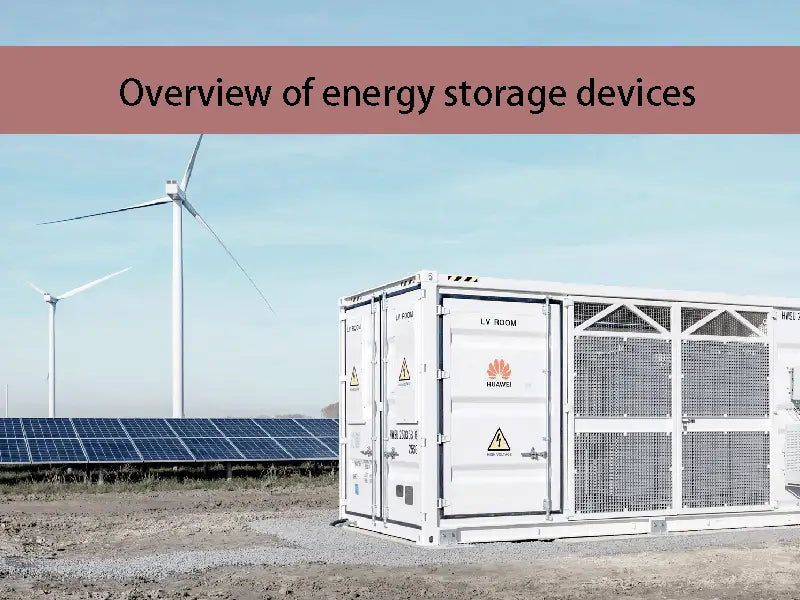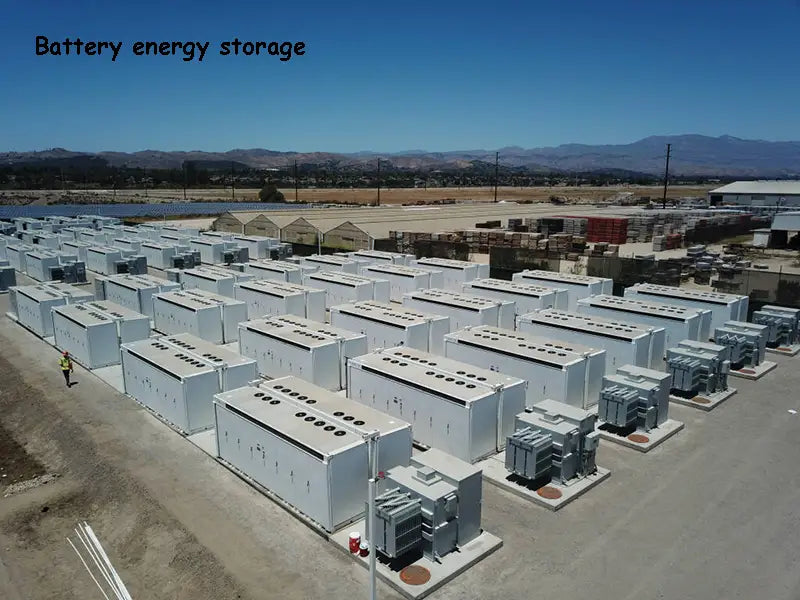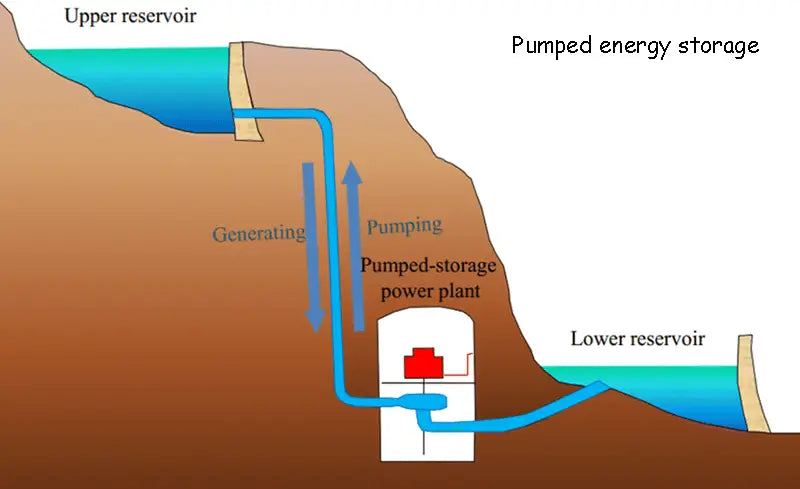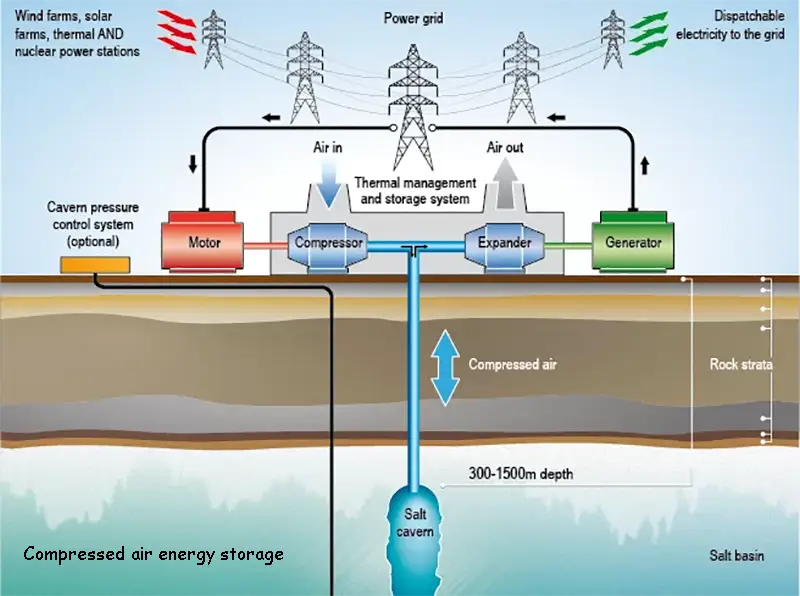
Main content:
Wind energy is a random energy source that is intermittent and cannot be directly stored. Therefore, even in areas with abundant wind energy resources, when wind turbines are used as the main method to obtain electric energy, appropriate energy storage devices must be equipped. During periods of strong wind, in addition to providing the required electrical energy to the electrical load through the wind turbine, the excess wind energy is converted into other forms of energy and stored in the energy storage device; during periods of weak or no wind. The energy stored in the energy storage device is released and converted into electrical energy to supply power to the electrical load. It can be seen that the energy storage device is essential to achieve stable and continuous power supply in the wind power generation system.
At present, the energy storage methods in wind power generation systems mainly include battery energy storage, flywheel energy storage, shaft water energy storage, compressed air energy storage, and electrolysis of water to produce hydrogen energy storage.
1. Battery energy storage

In the small-scale wind power storage system that operates independently, the battery is widely used as the energy storage device. The energy storage function of the battery is to store a part of the electric energy from the wind turbine when the wind is strong or the electricity load is reduced. In the energy storage battery; when the wind is weak, there is no wind, or the electricity load increases, the electric energy in the battery supplies power to the load to make up for the lack of energy generated by the wind turbine, so as to maintain a continuous and stable power supply to the load. Commonly used energy storage batteries in the system are lead-acid batteries and nickel-cadmium batteries.
The electromotive force of a single-cell lead-acid storage battery is about 2V, and the electromotive force of a single-cell alkaline zinc energy storage battery is about 1.2V. Connect multiple single-cell batteries in series to form a battery pack to obtain different energy storage battery pack potentials, such as 12 V, 24 V, 36 V, etc. When the external circuit is closed, the potential difference between the positive and negative poles of the energy storage battery is the terminal voltage of the battery.
The terminal voltage of the energy storage battery is different in the process of charging and discharging. The voltage of the energy storage battery is higher than its electromotive force during charging, and the voltage of the energy storage battery is lower than its electromotive force during discharge. This is because the energy storage battery has resistance. Because of this, the internal resistance of the energy storage battery changes significantly with temperature.
The energy storage battery can be continuously discharged for 10h; if the discharge current is 5A, it can be continuously discharged for 20h. During the discharge process, the voltage of the energy storage battery gradually decreases with the discharge. The voltage of the lead-acid battery cannot be lower than 1.8V during discharge, and the voltage of the alkaline battery cannot be lower than 1.1V. The optimal current of the energy storage battery when discharging The value is 10h discharge rate current, and the optimal charging current value of the energy storage battery is equal to its optimal discharging current value.
After the battery has been charged and discharged for many times, its capacity will decrease. When the capacity of the battery is reduced to below 80% of its rated value, it can no longer be used, that is, the energy storage battery has a certain service life. There are many factors that affect the energy storage life of the battery, such as excessive charging or discharging, the electrolyte solubility of the battery is too large or the purity is reduced, and the use in a high temperature environment will deteriorate the performance of the battery and reduce the service life of the battery. Lithium-ion batteries are one of the safest types of battery storage.
2. Flywheel energy storage

The flywheel energy storage is used in the wind power generation system, that is, a flywheel is installed on the shaft system of the wind turbine, and the inertial energy storage principle when the flywheel rotates is used. When the wind is strong, the wind energy is stored in the flywheel in the form of kinetic energy; When it is weak, the energy stored in the flywheel is released to drive the generator to generate electricity. The use of flywheel energy storage can stabilize the fluctuation of generator output power caused by wind fluctuations and improve the quality of power.
The flywheel used in the wind power generation system is generally made of steel, and the size of the flywheel energy storage device depends on how much energy the system needs to store and release.
3. Hydrogen production and energy storage by electrolysis of water

As we all know, electrolysis of water can produce hydrogen, and hydrogen can store energy. The use of electrolyzed water to produce hydrogen and store energy in wind power generation systems is to use the excess electricity provided by wind turbines to electrolyze water when the electricity load is small, so that hydrogen and oxygen Separating and storing hydrogen energy; when the electricity load increases and the wind is weakened or there is no wind, the stored hydrogen and oxygen are chemically reacted in the fuel cell to directly generate electricity, and continue to supply power to the load, so as to ensure the power supply. Therefore, this energy storage method converts the unstorable wind energy into hydrogen energy for storage at any time; and hydrogen production, oxygen storage and fuel cells are the key technologies and components of this energy storage method.
A fuel cell is a chemical energy storage battery whose energy storage principle is to convert the energy released when the fuel is oxidized into electrical energy through chemical changes. When hydrogen is used as fuel, the chemical energy released by the chemical change of hydrogen and oxygen is used, and it is directly converted into electric energy through electrode reaction. Using fuel cell power generation is a clean power generation method, and because there is no high temperature and high pressure It is safer and more reliable to work, and the efficiency of using fuel cells to generate electricity is very high. For example, the power generation efficiency of alkaline fuel cells can reach 50% to 70%.
In this energy storage method, hydrogen storage is also an important link. There are various forms of hydrogen storage technology. Among them, metal oxide hydrogen storage is the best, and its hydrogen storage degree is higher than that of gas hydrogen storage and liquid hydrogen storage. A regenerative fuel cell has also been developed, which can directly generate electricity by using hydrogen peroxide, and in turn, can electrolyze water to generate hydrogen and oxygen without any need for high-pressure and heat-insulating containers. There is no doubt that electrolysis of water for hydrogen production and energy storage is an efficient, clean, pollution-free, safe work, and long-life energy storage method, but the cost of fuel cells and hydrogen storage devices is relatively expensive.
4. Pumped energy storage

This method of energy storage can be used in areas with suitable terrain conditions. The so-called suitable terrain conditions mean that there is high ground near the site where the wind turbine is installed. In the high ground, a reservoir or reservoir can be built for energy storage, while in the low ground there is a high ground. water. When the wind is strong and the electrical load required by the electrical load is small, the excess electrical energy generated by the wind turbine drives the water pump, and the water in the low place is pumped to the storage tank or reservoir in the high place for energy storage; When it is weak, the water stored in the highland reservoir or the reservoir is released to flow to the lowland pool, the kinetic energy of the water flow is used to drive the turbine to rotate, and the generator connected to it is driven to generate electricity, so as to ensure the uninterrupted electricity load. At this time, wind turbines and hydroelectric power generation are running at the same time to supply power to the load together. Of course, in the windless period, as long as there is a certain amount of water in the highland reservoir or reservoir, hydroelectric power storage can be used to maintain the power supply.
5. Compressed air energy storage

Similar to the pumped water storage method, this energy storage method also requires specific terrain conditions. Compressed air energy storage requires excavated pits or abandoned mines or underground caves. When the wind is strong and the electricity load is low, it can be The excess electricity generated by the wind turbine drives an air compressor driven by an electric motor, which compresses the air and stores energy in the pit; and when there is no wind or when the load increases, the compressed air stored in the pit is stored. The air is released, creating a high-velocity airflow, which turns the turbine and drives the generator to generate electricity.
















